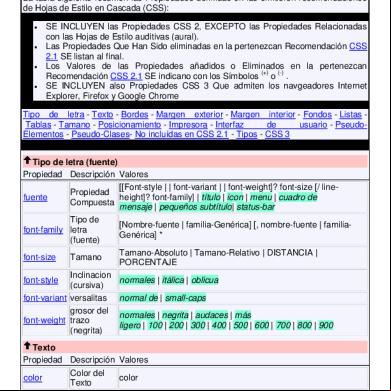Akuifer, Akuiklud, Dan Akuitard 8q63
This document was ed by and they confirmed that they have the permission to share it. If you are author or own the copyright of this book, please report to us by using this report form. Report 2z6p3t
Overview 5o1f4z
& View Akuifer, Akuiklud, Dan Akuitard as PDF for free.
More details 6z3438
- Words: 619
- Pages: 25
Akuifer, Akuiklud, atau Akuitard
Mata Kuliah : Geohidrologi dan Hidrotermal Dosen
: Tri Rani Puji Astuti, S.T., M.Eng.
I’m Geologist
Tri Rani Puji Astuti (Rani)
Well Site Geologist Total E&P Indonesie
Palembang, 8 April 1990 (25 yo)
Universitas Gadjah Mada
Master of Engineering in petroleum geology (M.Eng) 2011, final thesis research programs on Hokkaido University
Bachelor Degree in Geological Engineering (S.T) 2008
Achivement :
Student research at Hokkaido University (Long term PARE scholarship)
Fast track scholarship programs from DIKTI
1st winner “Olimpiade Geologi Indonesia”
SPE scholarship Java Section 2011
International & national research publication (IPTC, AAPG ICE, JAPAN conference, IAGI)
Rig’s Life
Rig’s Life
Rig’s Life
Importance of Ground Water Wells and springs provide water for 1. Drinking Supplies 2. Agricultural Irrigation 3. Livestock 4. Industry Ground water is a precious resource that is threatened by quantity and quality impacts.
Global Distribution of Water
Ground Water Zones Soil moisture Unsaturated zone Capillary fringe Water table Saturated zone
Ground Water Zones
Soil Moisture Water held by molecular attraction on soil particles. This moisture is used by plant roots.
Unsaturated Zone Area above the water table where pore spaces are filled with air and water. Water infiltrates through the soil, percolates downward by gravity, and eventually reaching the saturated zone. Other names for the unsaturated zone are the vadose zone or the zone of aeration.
Capillary Fringe Extends upward from the water table. Ground water is held by surface tension in tiny ages between grains. Capillary fringe thickness varies. - Sand: < 1 cm - Clay: Up to ten meters.
Zone of Saturation A zone where all of the pore space is completely filled with water. Water within the pores is called ground water. The upper limit of the zone of saturation is the Water table.
Water table
Porosity and Permeability Porosity is percentage of pore space. - Determines ground water storage volume. - May vary considerably over short distances.
Permeability is the ability of a material to transmit a fluid. - A measure of pore connectedness. - Some materials may have a high porosity and a low permeability.
Aquifer Aquifer: body of saturated rock or sediment through which water can move easily. – Examples: Sandstone, conglomerate, well-fractured limestone, bodies of sand and gravel. Aquifer is divided into 3: – Unconfined aquifer: water table is only partly filled. – Confined aquifer: water table completely filled with water under pressure. – Perched aquifer is an aquifer that is trapped in a lens form in the underground.
The factors that determine if a geologic unit is an aquifer include the following: (1) The permeability must be high enough that flow can be maintained. (2) The aquifer dimensions must be great enough (i.e., there must be a significant saturated thickness) to supply water to a well (3) The quality of the water must be good enough for the intended use.
Aquiclud or Aquitard Aquiclud or Aquitard is a layer of low permeability that can store groundwater and also transmit it slowly from one aquifer to another. The term leaky confining layer is also applied to such unit. Example: Silt and clay layer, cemented sediment, and non-fractured bedrock. Aquifuge is an absolutely impermeable unit that will not transmit any water.
Aquitard
Conclusion Aquifer: body of saturated rock or sediment through which water can move easily. Aquiclud or Aquitard is a layer of low permeability that can store groundwater and also transmit it slowly from one aquifer to another. Aquifuge is an absolutely impermeable unit that will not transmit any water.
Mata Kuliah : Geohidrologi dan Hidrotermal Dosen
: Tri Rani Puji Astuti, S.T., M.Eng.
I’m Geologist
Tri Rani Puji Astuti (Rani)
Well Site Geologist Total E&P Indonesie
Palembang, 8 April 1990 (25 yo)
Universitas Gadjah Mada
Master of Engineering in petroleum geology (M.Eng) 2011, final thesis research programs on Hokkaido University
Bachelor Degree in Geological Engineering (S.T) 2008
Achivement :
Student research at Hokkaido University (Long term PARE scholarship)
Fast track scholarship programs from DIKTI
1st winner “Olimpiade Geologi Indonesia”
SPE scholarship Java Section 2011
International & national research publication (IPTC, AAPG ICE, JAPAN conference, IAGI)
Rig’s Life
Rig’s Life
Rig’s Life
Importance of Ground Water Wells and springs provide water for 1. Drinking Supplies 2. Agricultural Irrigation 3. Livestock 4. Industry Ground water is a precious resource that is threatened by quantity and quality impacts.
Global Distribution of Water
Ground Water Zones Soil moisture Unsaturated zone Capillary fringe Water table Saturated zone
Ground Water Zones
Soil Moisture Water held by molecular attraction on soil particles. This moisture is used by plant roots.
Unsaturated Zone Area above the water table where pore spaces are filled with air and water. Water infiltrates through the soil, percolates downward by gravity, and eventually reaching the saturated zone. Other names for the unsaturated zone are the vadose zone or the zone of aeration.
Capillary Fringe Extends upward from the water table. Ground water is held by surface tension in tiny ages between grains. Capillary fringe thickness varies. - Sand: < 1 cm - Clay: Up to ten meters.
Zone of Saturation A zone where all of the pore space is completely filled with water. Water within the pores is called ground water. The upper limit of the zone of saturation is the Water table.
Water table
Porosity and Permeability Porosity is percentage of pore space. - Determines ground water storage volume. - May vary considerably over short distances.
Permeability is the ability of a material to transmit a fluid. - A measure of pore connectedness. - Some materials may have a high porosity and a low permeability.
Aquifer Aquifer: body of saturated rock or sediment through which water can move easily. – Examples: Sandstone, conglomerate, well-fractured limestone, bodies of sand and gravel. Aquifer is divided into 3: – Unconfined aquifer: water table is only partly filled. – Confined aquifer: water table completely filled with water under pressure. – Perched aquifer is an aquifer that is trapped in a lens form in the underground.
The factors that determine if a geologic unit is an aquifer include the following: (1) The permeability must be high enough that flow can be maintained. (2) The aquifer dimensions must be great enough (i.e., there must be a significant saturated thickness) to supply water to a well (3) The quality of the water must be good enough for the intended use.
Aquiclud or Aquitard Aquiclud or Aquitard is a layer of low permeability that can store groundwater and also transmit it slowly from one aquifer to another. The term leaky confining layer is also applied to such unit. Example: Silt and clay layer, cemented sediment, and non-fractured bedrock. Aquifuge is an absolutely impermeable unit that will not transmit any water.
Aquitard
Conclusion Aquifer: body of saturated rock or sediment through which water can move easily. Aquiclud or Aquitard is a layer of low permeability that can store groundwater and also transmit it slowly from one aquifer to another. Aquifuge is an absolutely impermeable unit that will not transmit any water.










